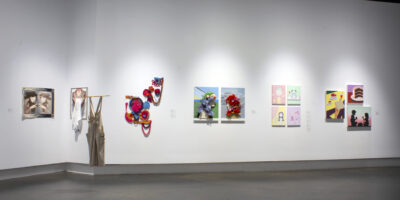Coming from the many wonders and marvels of the world of literature that we explored last week, there are many who find the next logical step to be transferring the written art to a visual spectacle on the silver screen. Of course, this gigantic leap has, more often then not, fallen much sort of the original grandeur of the original text in the eyes of many audiences, but the finished product does, on occasion, turn out to be a work of art in its own right.
Sometimes, it seems as if the public forgets the amount of artistry that goes into a good film. The medium often overlaps with many of the previously discussed categories, and must weave them into a quite literally sensational piece. The literary aspect is conveyed through the dialogue and script, either from an original screenplay or an adapted work from a worthy, previously written story. The latter leads to the delicate and difficult path of choosing when and how to deviate from the original material. Some directors wish to stick as loyally to the original text as possible to properly flatter it and bring it to new audiences, like Peter Jackson did with The Lord of the Rings trilogy (compared to his slightly more liberal adaptation of The Hobbit). Some directors, on the other hand, keep very little of the original works and work with complete liberty on the film, such as O Brother, Where Art Thou? and its original work, The Odyssey by Homer. As I talked about one of my favourite novels of all time last issue, Shoeless Joe, it is worth mentioning that it was turned into a cinematic wonder with Field of Dreams, which takes a completely different sort of artistic view on the novel but in a completely acceptable way.
Even after dialogue and adapting is complete, there is still much planning to be done before the filming process can begin. The realm of cinematography is one of my personal favourite aspects to explore in films, as it can not only be a truly breathtaking visual splendor, but can also add many subtle implications to the nature of the films. I often think of it as the filmmakers rhetoric, as simple changes to lighting, positioning of props and actors, weather, focus and saturation of the scene can make a much more significant emotional impact on the audience. Some of my personal favourite films that play with this in very different and effective ways include Tinker Tailor Soldier Spy, Black Swan, and Schindler’s List. Of course, the plain-and-simple visual spectacle of the film can play a huge role even when it doesn’t have ulterior motives– take any of the good old Disney, hand-animated films (some of my favourites for artwork are Sleeping Beauty, The Hunchback of Notre Dame, Hercules, and Pocahontas). Eye-candy in the scenery is a must-have for any sort of fantasy or sci-fi epic– take the Harry Potter, Star Wars, Lord of the Rings sagas and any Studio Ghibli film as evidence enough.
Once you’ve got the scene all planned out, your recipe is going to need some damned good actors to pull it off– and not only ‘good actors’. You need an actor that suits the role well, because they can make or break the mood that the script, lighting and shooting are all trying to build. Sometimes, this can be purely a matter of taste– my favourite vampire film of all time, Interview with the Vampire, often receives criticism for it’s choice of Tom Cruise in a major leading role, but I did not find it as horrible as many people make it out to be. On the opposite hand, though, there are some actors who just ensnared a role so perfectly that there could be no finer substitute– for example, Heath Ledger’s portrayal of The Joker, Harrison Ford as Indiana Jones, and Christopher Lee as pretty much anything.
Now the time comes to start putting the final touches on the film– perhaps most importantly, the audio aspect to the film. As discussed in previous articles, the soundtrack and music of a film adds such emotional depth to scenes that the film would be nowhere near as effective without them. When I go to watch a film in theaters, I always wait in the credits to make sure I see the composer’s name, because there I tend to get a little jolt of happiness whenever I see familiar names like Alan Silvestri, James Newton Howard, Howard Shore, John Williams, Thomas Newman, Hans Zimmer, or my personal favourite, James Horner. There are also films that centre around already well-established pieces of musical art, and incorporate them into the film with new meaning and purpose (two great examples of this being the use of Chopin in The Pianist, and Mozart in Amadeus).
This is what makes films so incredible– the fact that so many different forms of art must come together in order to make one immense, gigantic masterpiece. Of course, this does not mean that everything that gets pushed to the big screen is exactly “art”, but there is definitely much genuine effort and creativity to be appreciated many of them.




Leave a Reply